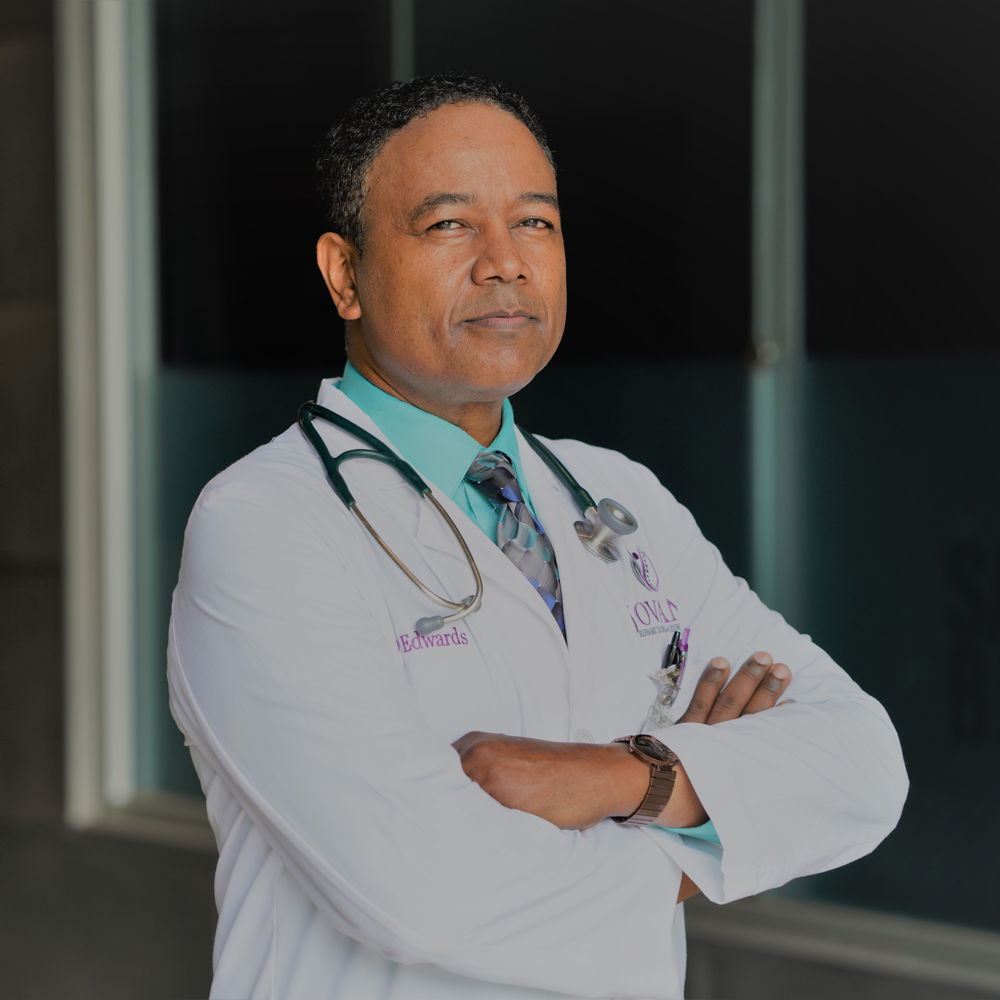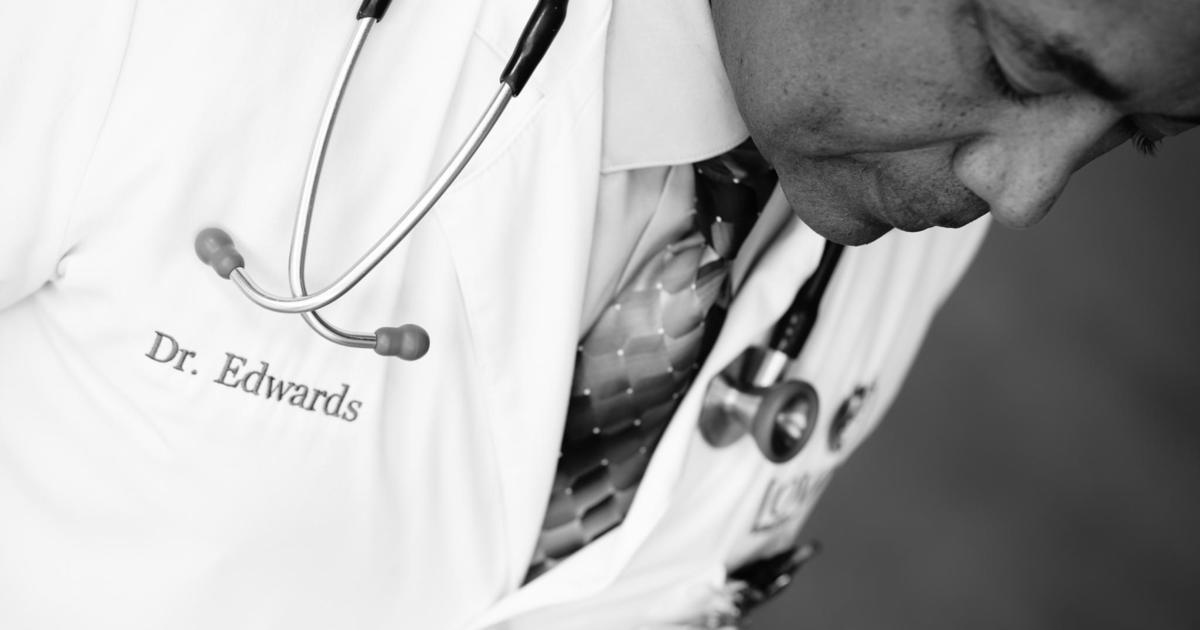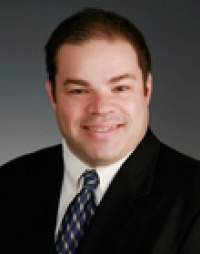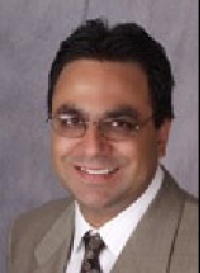
Dr. Ivan Edwards D.O.
Physiatrist (Physical Medicine) | Physical Medicine & Rehabilitation
San Antonio zip codes San Antonio Texas, 78258About
Dr. Ivan Edwards (DO, FAAPMR, FRSA) is a medical doctor, CEO/owner of a healthcare entity, a Reserve military officer, a community leader with local and international affiliations, and an international motivational speaker.
As a medical doctor, Dr. Edwards is a renowned specialist who treats a wide variety of medical conditions affecting the brain, spinal cord, bones, joints, muscles, nerves, ligaments, and tendons. In particular, he has expertise in the areas of medical rehabilitation, musculoskeletal medicine, and comprehensive pain management. Most of the patients he sees have had trauma, injury, or have musculoskeletal and/or neurological disorders, including low back, joint and extremity pain.
He is board certified in Physical Medicine & Rehabilitation and is a Fellow of the American Academy of Physical Medicine & Rehabilitation.
Dr. Edwards is the CEO and owner of JOVANA Rehabilitation Medicine & Pain, a healthcare care entity located in San Antonio, TX. He is a consultant in numerous San Antonio facilities. Although his practice is mostly inpatient, Dr Edwards also consults with patients in his office.
He is a military veteran, currently and proudly serving as a USAF Flight Surgeon, at the rank of Lt. Colonel. He also served as the Health and Wellness physician for the San Antonio Fire Department for over five years.
In terms of leadership, Dr. Edwards is a board member of a few hospitals’ medical executive board committees. He is also at the leadership helm of other business entities. As a respected authority figure, he has assisted in numerous court cases pertaining to injuries, trauma, and rehabilitation.
He holds memberships in multiple organizations, including the Aerospace Medical Association, the Military officers Association of America, and the Society of USAF Flight Surgeons.
He is an elected Fellow of the Royal Society of Arts (FRSA), a prestigious designation accorded to him for serving communities in the areas of social progress and development. He was simultaneously accepted as a Fellow in the historical Royal Society of Medicine (London, UK).
He is an international motivational speaker. He has spoken on topics related to health, the human condition, personal growth, the environment – and other topics relevant to daily life.
Dr. Edwards is a Kentucky Colonel, commisioned in recognition of his accomplishments and service to the community and nation.
Education and Training
East Virginia Medical School Certificate - Medicine 2005
UTHSCSA Board Certificate - PM&R 2008
USAF School of Aerospace Med Certificate - Flight Surgeon 2016
Midwestern University DO 2004
Rivier University BS (cum laude) 1999
Board Certification
American Osteopathic Board of Physical Medicine and Rehabilitation Medicine
Physical Medicine and RehabilitationAmerican Board of Physical Medicine and RehabilitationABPMR
Provider Details

Dr. Ivan Edwards D.O.'s Expert Contributions
Your loved ones know your list…
I’ll never forget the day when I received a call that impacted me greatly. It was early in the morning, and I was doing my rounds in a healthcare facility. The head nurse urgently called me to attend to one of my patients who was having difficulty breathing. I was familiar with the patient: a...
In Search For a Better Way...
Pills, medicines, and more medicines. They may tame diseases, but they don’t solve the problem. They may suppress the symptoms, but they do not address the root causes of diseases. They may offer temporary relief, but they do not offer lasting healing. I tell my potential patients, “Come see...
6 Reasons You Should Go On A Plant-Based Diet
Like we all intrinsically desire, you want to live a healthy and better life. A life well lived serves a purpose. Getting sick is undesirable; it robs your joy, peace, and purpose. A life of good health is what defines a good quality of life. A good quality of life is what you want. There is...
Is physical therapy effective for chronic wrist pain?
Occupational therapy would be better suited for chronic wrist pain. READ MORE
Can physical therapy help hip arthritis?
Yes, it can. READ MORE
How long does it take to walk after hip surgery?
For a hip replacement, most patients can begin walking on the day they have had surgery. Recovery following hip surgery varies. On average, hip replacement recovery can take around 2-4 weeks. Some experts quote a recovery time of 3-6 weeks. But, more importantly, you should remember that everyone is different, and the recovery time can vary--depending on the individual's health status, comorbidities and previous activity level. READ MORE
Is physical therapy effective for knee pain?
Yes, if you choose the right therapist who has worked with knees. Ask first before you commit working with one. READ MORE
Can tennis elbow be treated by physiotherapy?
Depending on the severity of the condition, yes. If the condition becomes recurrent or develops into a chronic pathology - you might then need to have an injection (a corticosteroid injection or PRP) to improve your symptoms. Physiotherapy is helpful in treating some of the underlying causes of tennis elbow. READ MORE
Is a chiropractor or physical therapist better for bad posture?
A chiropractor and a physical therapist have unique approaches to treating posture issues. Both can get the job done. But there are some differences you should keep in mind. Generally, a chiropractor is much more well versed in spinal issues than he/she is in the intricacies of posture, mobility and gait. Similarly, a physical therapist is much more well versed in the issues of posture, mobility and gait than he/she is in the intricacies of the spine. Short answer: a physical therapist would be better for bad posture if spinal issues are not central to the issue. You can also utilize the services of both if your spine is part of the problem in your bad posture. READ MORE
Can you regain movement after brain surgery?
Most certainly, yes--and this depends largely on the extent of surgery. READ MORE
Should you go to the chiropractor before or after a massage?
It doesn't make any difference physiologically. It depends on your sense of wellbeing. READ MORE
Should I massage my belly after birth?
Typically, postpartum massage is recommended within the first 12 weeks following delivery. Having someone, like a trained therapist, do it (after getting your OB-GYN doctor to bless it--is highly recommended. Do not do it alone. READ MORE
Can you get physiotherapy on hospice?
Yes, you can. Physiotherapy is meant to increase quality of life in patients on hospice. One can request it. READ MORE
Can a stroke patient recover from paralysis?
Recovery from paralysis, following a stroke, depends on three factors: Location a) the location of the impacted part of the brain or spinal cord that the stroke is associated with. If, for example, the stroke arises in the motor area of the brain versus the sensory part--the paralysis will be more pronounced and longer lasting Rehabilitation b) Rehabilitation would be critical to restore recovery. If one does not participate in rehabilitation, the paralysis would persist or evolve into spasticity and contracture--and into more serious disability. Compliance with treatment and therapy 3. Failure to comply with the appropriate treatment and therapy would limit the appropriate recovery from paralysis. READ MORE
How to keep my knee from popping out of place?
What you have is patellar instability. It happens when the patella "de-tracks" out of the trochlea groove, specifically, a patellar tracking disorder This condition most commonly affects women. It occurs from a twisting mechanism with the knee in extension, or with encounter of a direct hit to the knee cap. Some of the proven ways to prevent the knee for popping out of place is to do the following: a) taping or bracing - to prevent the de-tracking mechanism b) orthotic device - to stabilize the tracking mechanism over time c) quad strengthening - to support the appropriate tracking mechanism Repeated subluxations (incomplete pop outs) or dislocations (complete pop outs) can further be assessed via imaging, to ensure that no ligaments or tissue destruction have occurred to precipitate the repeated dysfunction. READ MORE
How long does it take to get strength back after COVID?
It all depends on your age, comorbidities, and prior level of health and endurance. It can take up to 6 months, following the illness, for the patient to regain strength (1). Generally, it is safe to postulate that the length of time it takes to regain one's strength after having COVID-19 depends on the severity of the illness one went through. Source 1. https://www.ncbi.nlm.nih.gov/pmc/articles/PMC7833295/ READ MORE
What rehabilitation is needed after a stroke?
Rehabilitation, after stroke, is highly individualized from one patient to another. It is NOT a one fit all treatment modality. Stroke rehabilitation is best attained in a facility staffed with therapists and a Physical Medicine & Rehabilitation specialist, practicing stroke rehabilitation since not all physiatrists practice stroke rehabilitation. Stroke rehabilitation covers critical areas of mobility, ADL tasks, speech, cognitive, and medical management of stroke sequelae that encompasses issues like headaches, pain, depression, and bowel/bladder dysfunctions. Here are some generic guidelines for stroke rehabilitation that would form the basis of a sound rehabilitation course in a patient who has had a stroke: a) Promote mobility: • exercises whose goal is to enable a patient develop in and out of bed mobility. • motor-skill type exercises - for muscle strength and coordination. • constraint-induced therapy - to use affected paralyzed musculature. • Range-of-motion therapy - to minimize contracture formation. b) promote ADL/self-care tasks: • engage in basic ADL task re-training. c) Promote speech, cognitive and emotional functioning: • Therapy sessions for speech, cognitive disorders (memory, processing, problem-solving) - including swallowing and eating. d) Manage spasticity e) Manage bowel/bladder dysfunction f) Manage conditions that increase risks of having further strokes g) Manage post stroke depression (can occur after one has had a stroke) • Monitor and treat. h) Manage post stroke pain • Monitor and treat central and peripheral pain as well. READ MORE
What causes joint pain in knees?
Multiple causes can precipitate knee pain: joint/bone issues, soft tissue disorders, bursitis, injuries, ligament tears, etc. Self-diagnosis, via google search, will help you. Seeing a right doctor will. The best thing to do is go see a doctor, preferably a Physical Medicine & Rehabilitation specialist (a doctor who specializes in bones, muscles, nerves, brain, spine issues). READ MORE
Frequent hand numbness?
An entrapment type neuropathy. It can be either a distal entrapment mono-neuropathy like carpal tunnel syndrome, or a proximal nerve root entrapment, aka a radiculopathy. Go see a PM&R specialist specialist. READ MORE
What exercise can I do after prostate surgery?
Participating in walking and performing pelvic floor muscle exercises (for strengthening) are recommended after prostate surgery, i.e. Kegel exercises. READ MORE
Who is best to see for neck pain?
A Physical Medicine and Rehabilitation (PM&R) specialist. First call/ask if the specialist does musculoskeletal medicine--since PM&R specialists do a variety of muscle/joint/nerve/pain work. READ MORE
Will frozen shoulder heal without physical therapy?
Frozen shoulder, also known as adhesive capsulitis, is a common condition that results in the loss of the normal range of motion in the affected shoulder. It can be painful, rigid and disabling. It generally affects women more than men (in the age group of 40 to 60). Left untreated, a frozen shoulder gets worse and ultimately results in the disability of the affected shoulder. You should see a physiatrist (a PM&R specialist) who can assist you in treatment and send you to the right therapist for continued care. READ MORE
What does a physiatrist do for back pain?
Physiatrists are specially trained in the complex area of musculoskeletal issues; they have expertise related to issues and matters of bones, muscles, tendons, ligaments, nerves, rehabilitation and pain. Like any other specially, however, not all physiatrists treat back pain--since the specialty Of Physical Medicine & Rehabilitation is broad. Some physiatrists treat brain issues (like TBI non-surgically); some treat spine issues (like spinal cord injuries non-surgically), while others can treat neurological issues from carpal tunnel, neuropathy, spasticity to MS and Parkinson's disease. Overall, all physiatrists are trained to improve and/or restore function in a patient with painful syndromes, injury, illness, and disability. A physiatrist who treats back pain is highly trained in the appropriate diagnosis and treatment of the condition, including what physical or occupational therapy is required to provide the best outcome. So, seeing a physiatrist will ensure that you are getting treatment form a well trained specialist, who is also providing the best oversight to your rehab course. Seeing a physiatrist ensures that you will get holistic care in the treatment of your back pain. If holistic care is what you seek, then go see a physiatrist! A physiatrist who treats low back pain would have the expertise to do the following for you, if needed: a) NCS/EMG studies to assess what nerves have been affected in your disease process. b) Peripheral joint injections (in treatment) for any joints or parts co-existing or contributing to your overall back pain. . c) Trigger point injections for chronic myofascial (soft-tissue) pain associated with your back pain. d) Execution of modalities, such as heat, cold, manual manipulation (in the case of an osteopathic trained physiatrist), relative to treatment of your back pain. e) Execution of ultrasound guided injections, interventional spinal injections and other procedures, such as prolotherapy, platelet rich plasma injections, and autologous stem cell treatments (for those trained in these areas), relative to diagnosis and treatment of your back pain. f) Management of pain and associated conditions using various medications and narcotics - physiatrists that treat pain syndromes, of note, have expertise in pain medications and spasticity medications. READ MORE
Areas of expertise and specialization
Faculty Titles & Positions
- Adjunct Clinical Associate Professor UIWSOM 2022 - Present
Awards
- Patients' Choice Awards (2008, 2009, 2010, 2011, 2013, 2014, 2015, 2016, 2017, 2018, 2020, 2021) 2020 Vitals Patient Reviews
- Compassionate Doctor Recognition (2010, 2011, 2013, 2014, 2015, 2016, 2017, 2018, 2020) 2020 Vitals Patient Reviews
- Top 10 Doctor - State (2014) 2014 Vitals Patient Reviews
- Compassionate Doctor Award - 5 Year Honoree (2020, 2018, 2017) 2017 Vitals Patient Reviews
- On-Time Doctor Award (2020, 2018, 2017, 2016, 2015) 2020 Vitals Patient Reviews
- Patients' Choice 5th Anniversary Award (2020, 2018, 2017) 2020 Vitals Patient Reviews
- Compassionate Doctor Award - 5 Year Honoree (2020, 2018, 2017) 2020 Vitals Patient Reviews
- Fellow, Royal Society of the Arts 2021 The Royal Society of the Arts
- Kentucky Colonel 2021 Governor of the Commonwealth of Kentucky
Professional Memberships
- American Academy of Physical Medicine and Rehabilitation
- Aerospace Medical Association
- Texas Medical Association
- Military Officers Association of America
- Society of USAF Flight Surgeons
- Fellow, Royal Society of Medicine
Charities and Philanthropic Endeavors
- Healing Springs
- Uganda Missions - Child sponsorship program (1990)
Dr. Ivan Edwards D.O.'s Practice location
Jovana Rehabilitation Medicine Pain
6502 Bandera Rd, Ste 102 -San Antonio, TX, TX 78238Get Direction
Dr. Ivan Edwards D.O.'s reviews
Write ReviewPatient Experience with Dr. Edwards
Recommended Articles
- How to Spot Breast Cancer Charity Scams
October marks another year of Breast Cancer Awareness Month. The event, which started as just a week-long endeavor in 1985, is a time for the public to come together to raise awareness and fundraise for the disease. When used properly, donated funds can go towards research organizations...
- Is There a Link Between Stress Fracture and Shin Splints?
Both shin splints and stress fractures are regarded as overuse injuries as a result of overtraining or over exercising. Even though both may have the same symptoms, stress fractures are more severe than shin splints. Thus, it is better that you learn the difference between the two.Shin splints vs....
- Orange Poop: A Sign of Celiac Disease?
Children play what they like wherever they want. Likewise, they are known to eat anything that they can get their hands on. Kids are known to possess such curious, impulsive, and playful traits, which can be tolerated by most. Yet, when they feel unwell, things are never okay; like this one instance...
- Lactose Intolerance vs. IBS
OverviewIrritable bowel syndrome (IBS) is a gastrointestinal (GI) disorder that can be mistaken for lactose intolerance and other digestive issues. Know the differences between these disorders to find relief and effective treatment. Irritable bowel syndrome (IBS) has a variety of potential causes....
- Is Malaria Preventable?
Malaria is a serious, but preventable disease more commonly found in some tropical and subtropical countries. It is a disease caused by the infection of the parasite Plasmodium, which lives in mosquitoes. Malaria is spread by the bite of an infected mosquito. Many people who travel to places...
- The Top 8 Diet Options
A number of studies have reported more than once that choosing the right kinds of foods is the first step towards weight loss. The top eight diet options:...
Nearby Providers
- Dr. Ephraim K Brenman DO150 E Sonterra Blvd San Antonio TX 78258
- Dr. Urfan Ahmad Dar M.D.110 Stone Oak Loop San Antonio TX 78258
- Dr. Alfredo S Romero M.D.1202 E SONTERRA BLVD STE 101 SAN ANTONIO TX 78258
- Dr. Alan W Young D.O225 E Sonterra Blvd San Antonio TX 78258
- Dr. Lei Zhang MD19114 La Verita San Antonio TX 78258
Nearest Hospitals
SOUTH TEXAS SPINE AND SURGICAL HOSPITALl
18600 NORTH HARDY OAK BLVD SAN ANTONIO TX 78258METHODIST STONE OAK HOSPITALl
1139 E SONTERRA BLVD SAN ANTONIO TX 78258BAPTIST EMERGENCY HOSPITALl
16088 SAN PEDRO SAN ANTONIO TX 78232UNIVERSITY HEALTH SYSTEMl
4502 MEDICAL DR SAN ANTONIO TX 78229METHODIST HOSPITALl
7700 FLOYD CURL DR SAN ANTONIO TX 78229METHODIST AMBULATORY SURGERY HOSPITAL NWl
9150 HUEBNER RD SUITE 100 SAN ANTONIO TX 78240









